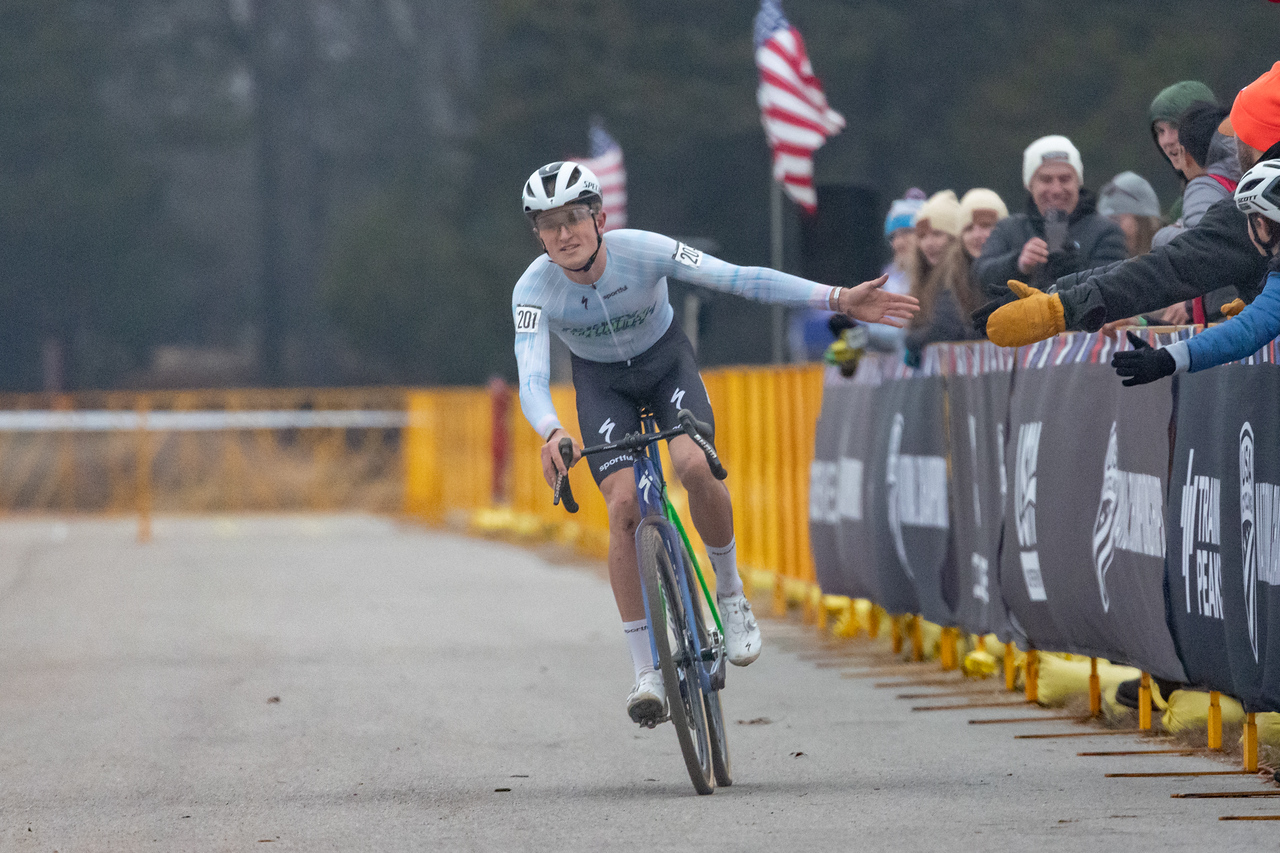Best gravel bikes under $1,000 / £1,000: Start riding off-road for less
Low-priced gravel bikes costing under £1,000 / $1,000 for affordable gravel riding
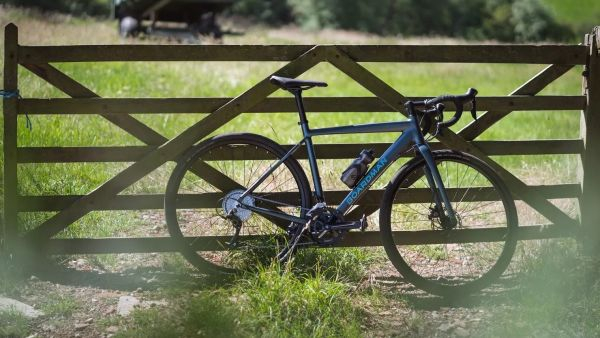
The best gravel bikes under $1,000 in the US or £1,000 in the UK will let you get started gravel riding without too much expense.
At this price point, you'll usually find an alloy frame. Sometimes it will be paired with a gravel groupset like Microshift Sword. It's more likely to be specced with an 8, 9 or 10-speed road bike groupset. This should be fine for lighter gravel use, although you may not get the lower gear ratios that can be helpful off-road.
Disc brakes are the norm on gravel bikes, but at lower prices, they're likely to be cable-operated mechanical ones rather than the more expensive hydraulic disc brakes. It's worth looking out for tubeless-ready wheels and tyres as well, as these can lower the chances of punctures.
If you can't find all these features on a gravel bike costing under $1,000 / £1,000, we've got guides for the best gravel bikes under £2,000 and the best budget gravel bikes.
Here are our picks of the best gravel bikes under $1,000 / £1,000, while lower down we've got a guide to how to choose the best lower-priced gravel bike.
Last updated on 19th of February 2025
Checked over all the products featured in the guide to ensure all the bikes are still current and available, any outdated products have been removed and replaced with better options.
Best gravel bikes under $1,000 in the US
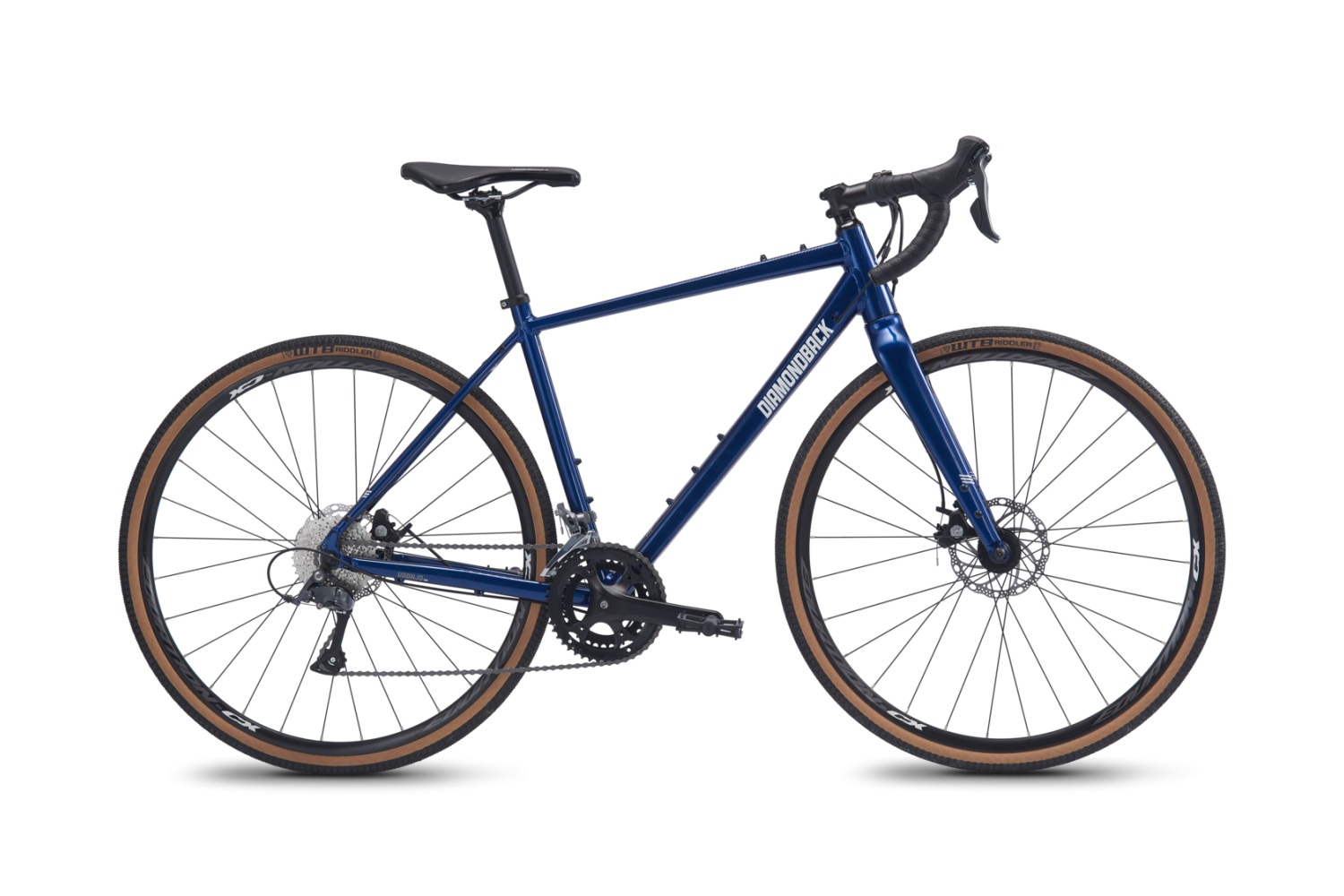
1. Diamondback Haanjo 2
Specifications
Reasons to buy
Reasons to avoid
The Diamondback Haanjo gives you rack, fender and fork low-rider mounts, as well as a stable gravel geometry and plenty of tyre clearance for the 38mm rubber fitted as stock. The bike is made of aluminium alloy and comes with a steel fork.
Shifting is taken by an 8-speed Shimano Claris groupset, that features a 46/34T crankset, which gives you lower ratios than a standard compact to help with off-road exploring. Stopping power is provided by Tektro Miro mechanical disc brakes, with a 160mm rotor up front and 140mm out back.
Currently only showing availability in M, the Haanjo 2 can be bought directly from Diamondback.
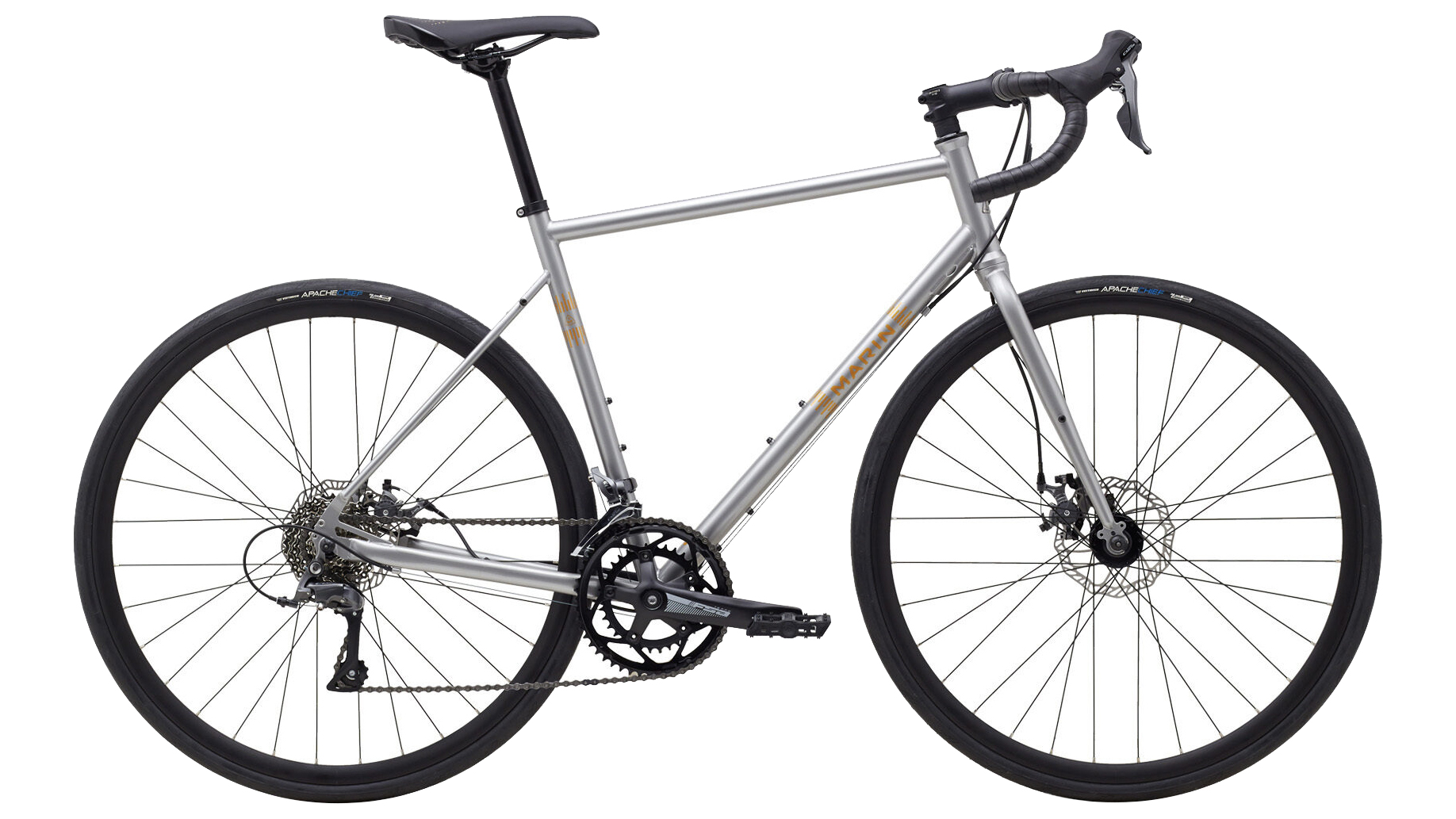
2. Marin Nicasio
Specifications
Reasons to buy
Reasons to avoid
Built for on/off-road adventures, the steel Nicasio is set up for load-lugging both on and off-tarmac, with rack and fender mounts and the option to carry two or three bottles. The Nicasio is compatible with 650b wheels, as well as the 700c wheels that it comes with, and it can handle 650b rubber up to 47mm wide.
It's kitted out with 8-speed Shimano Claris gearing and a good spread of gear ratios. Although all gears are above 1:1, gears below this are considered ideal for off-road climbs. The mechanical disc brakes will keep you stopping reliably whatever the weather though.
For the same price, the Nicasio 1 offers a choice of a step-through frame as well as a standard top tube option.
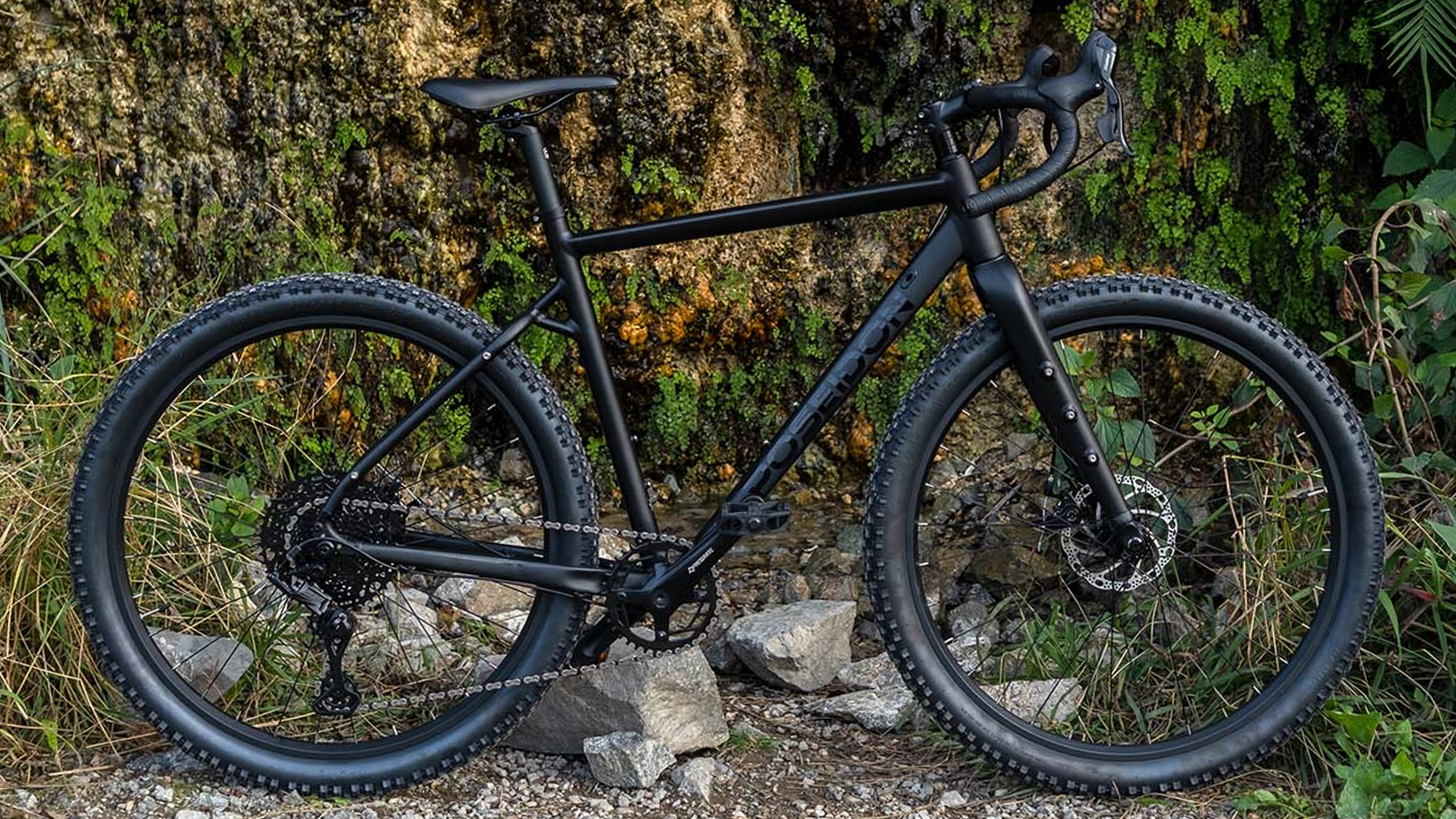
3. Poseidon Dropbar Redwood
Specifications
Reasons to buy
Reasons to avoid
If your gravel riding takes on the most rugged terrain or you want the most comfortable ride then Poseidon Dropbar Redwood is unmatched. Its frankly ludicrous 650b by 2.6in tyre clearance means you can run huge mountain bike tyres for maximum grip and bump-absorbing air volume.
There's a Microshift Advent X 10-speed drivetrain giving plenty of gear range to climb up the steepest hills. The derailleur comes equipped with a clutch too which helps keep the chain on and quiet when riding rough trails.
Poseidon has ensured there is an abundance of bosses for carrying plenty of water and there are three bosses on each fork leg for mounting bikepacking bags with each side capable of carrying 70lbs of gear.
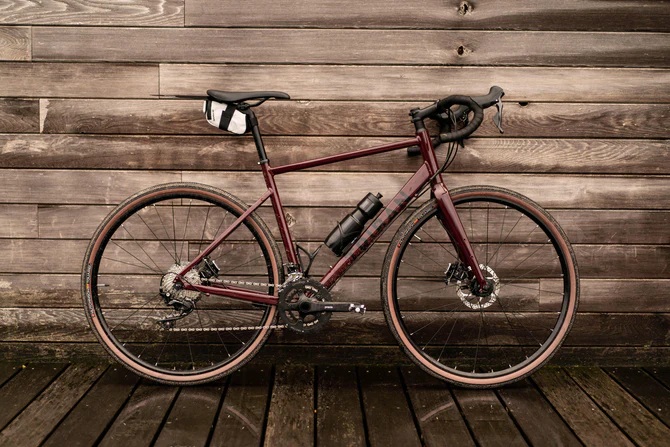
4. Triban GRVL520
Specifications
Reasons to buy
Reasons to avoid
Decathlon's Triban GRVL520 is a good entry-level gravel bike, with an alloy frame and a fork with carbon legs and an alloy steerer tube. There's decent tyre clearance and fender and rack mounts too.
Impressively at the price, Decathlon has specced 11-speed Shimano 105 with a subcompact crankset. The hitch is that the bike is available in size XL only. It comes complete with tubeless-ready wheels and Hutchinson tyres, so all it needs is valves and sealant to set up tubeless.
Whether you're just getting into gravel riding or upgrading your current setup, it's worth checking our Decathlon voucher codes for potential savings on bikes and kit.
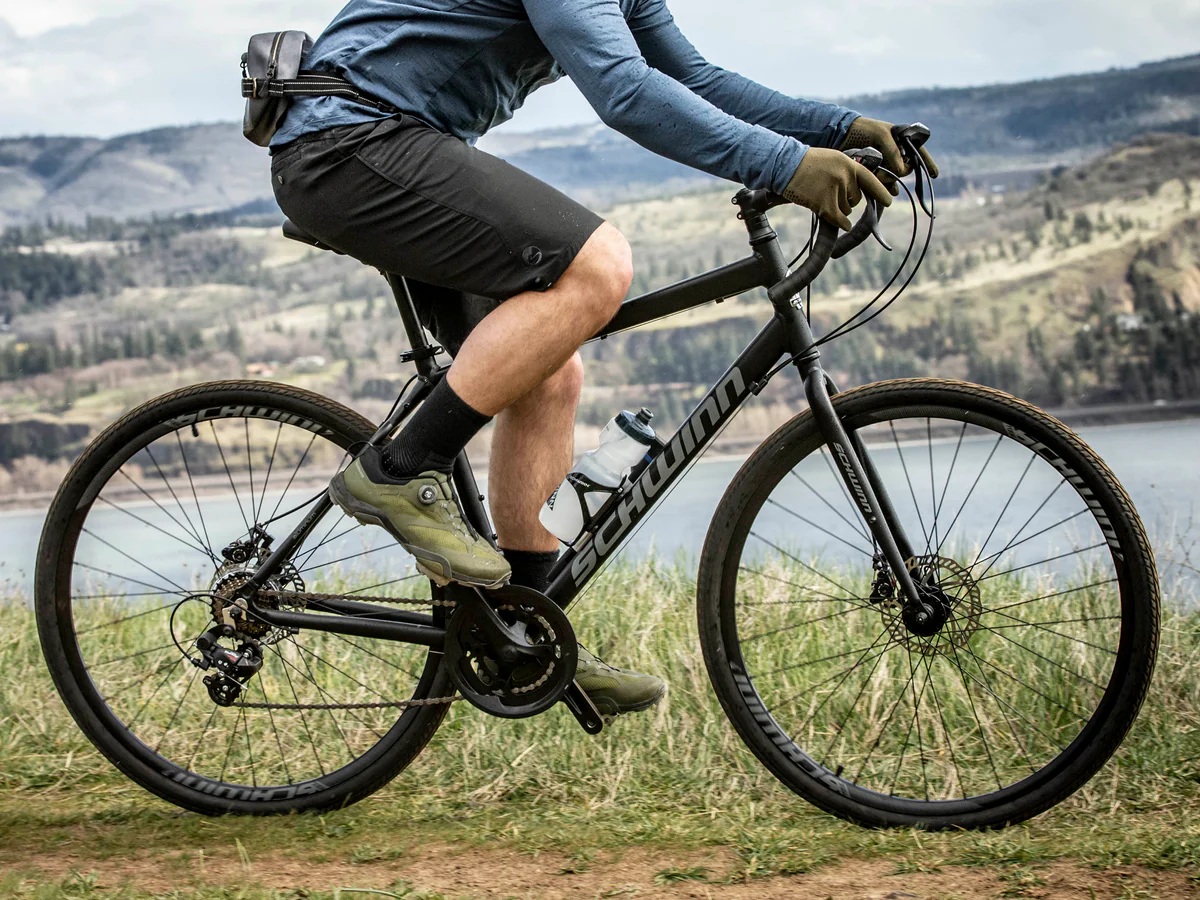
5. Schwinn Sporterra
Specifications
Reasons to buy
Reasons to avoid
Schwinn has been making bikes for years and the Sporterra builds on that legacy. It comes with 38mm wide tyres for plenty of grip and a 2x7-speed Shimano groupset, along with disc brakes. It's definitely at the lower end of the price range, and so won't perform as well as something like the Triban Grvl, but it may well be the perfect starter to get you going.
The alloy-framed Sporterra weighs a claimed 18.39 kilograms and comes in one size only. It just might be the pick to get you into gravel riding on the cheap, although the single size is claimed to fit riders between 5'7" and 6'0", so shorted or taller riders may be disappointed.
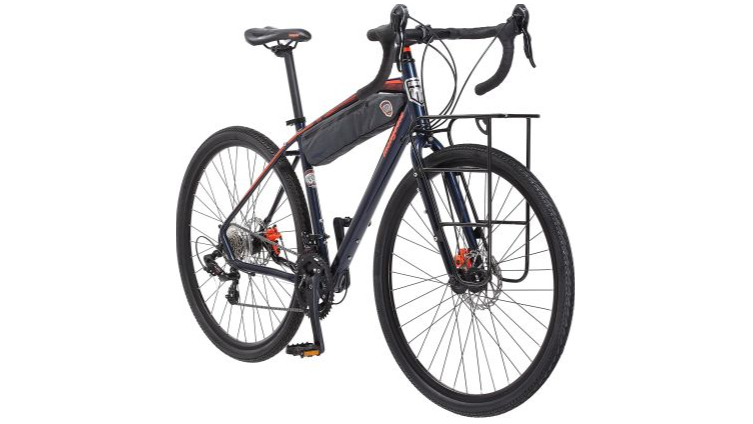
6. Mongoose Elroy
Specifications
Reasons to buy
Reasons to avoid
The Mongoose Elroy adventure bike features an aluminium frame and steel fork. It also comes with a front rack and a frame bag included. You can fit another rack to the rear and up to five bottle cages, so it's ready for all your adventures. This is a bike that is set up to suit touring or bikepacking from the get-go if you are looking to do more of that kind of riding.
There's a Shimano Tourney seven-speed transmission with a reasonable gear range and 40 mm-width tyres to help you keep your grip and provide some extra comfort. The bike also features mechanical disc brakes.
Best gravel bikes under £1,000 in the UK
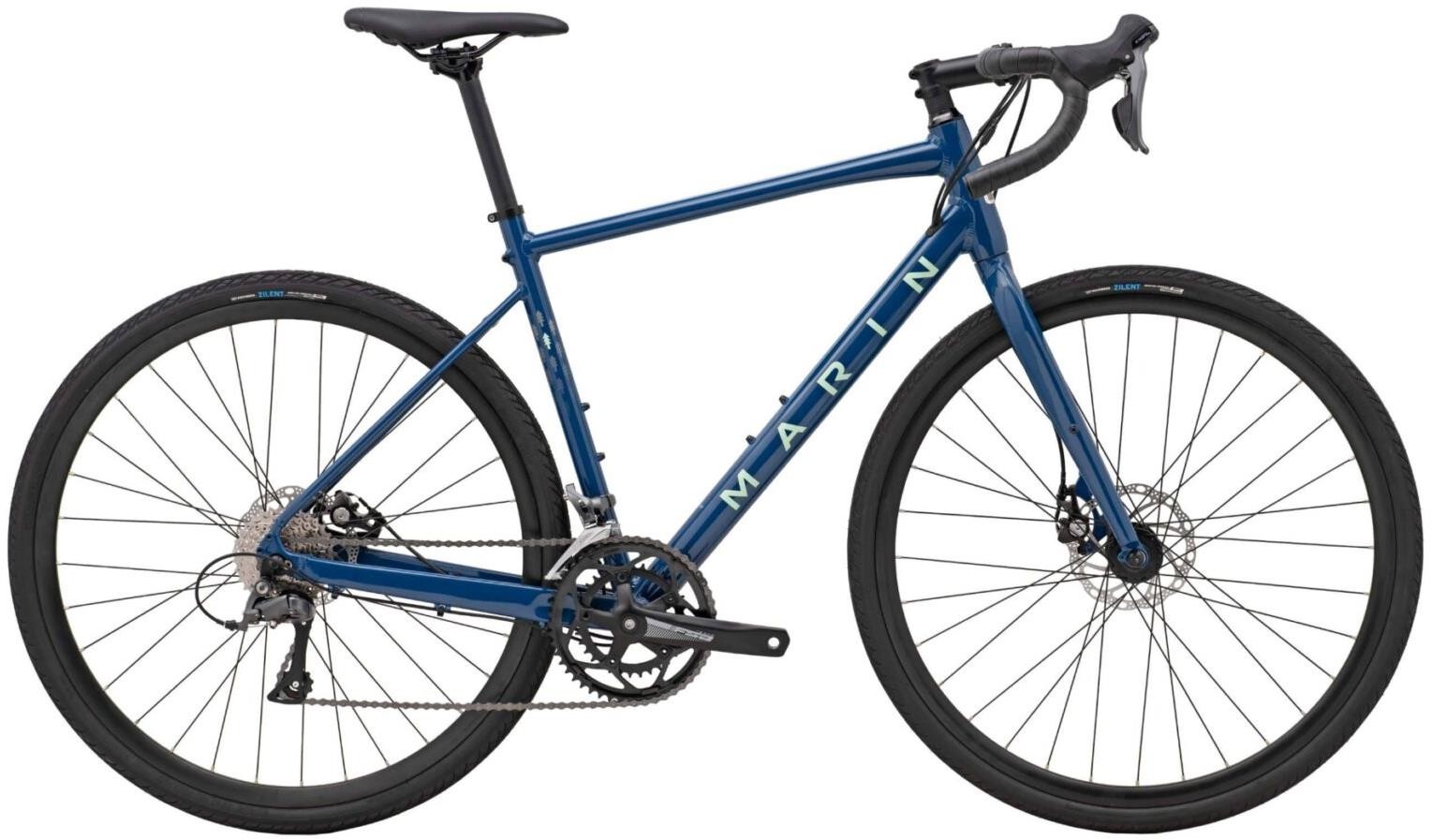
1. Marin Gestalt
Specifications
Reasons to buy
Reasons to avoid
If you've only got room for one bike to do it all, the Marin Gestalt is a versatile workhorse that can double up as a commuter during the week and a gravel and adventure bike at the weekend. The alloy frame and fork offer some added comfort that soaks up the bumps, and the Gestalt come with all the relevant mounting points for racks, mudguards and bottle cages to turn it into whatever you need it to be.
It's equipped with Shimano's eight-speed Claris drivetrain which offers plenty of gears although they stop above 1:1, which may make for tougher climbing off-road. It rolls on 36mm wide WTB Exposure tyres and includes Tektro mechanical disc brakes.
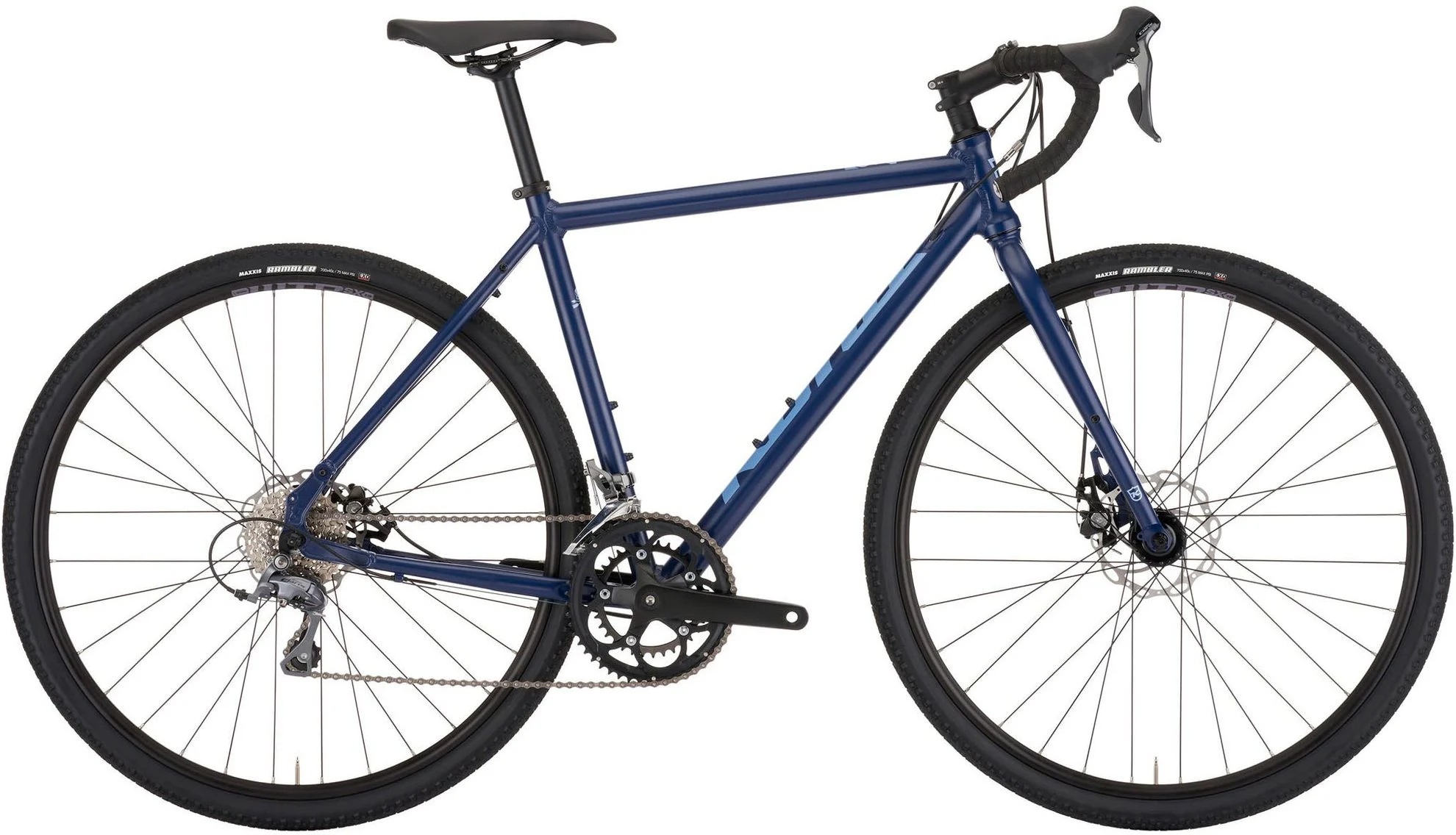
2. Kona Rove AL 700
Specifications
Reasons to buy
Reasons to avoid
Gravel bikes are often accused of just being hardtail mountain bikes from the 1990s; the Kona Rove AL exemplifies this to a ‘T’. It's available rolling either on 650b wheels with 47mm tyres or 700c with 40mm tyres. The frame and fork are made from butted 6061 aluminium, and the geometry isn’t overly aggressive, meaning this bike is ideal for those who are still building their mixed surface skills.
The Rove features a Claris 8-speed drivetrain in a 2x configuration, with gearing down to 1:1 for easier climbing. Keeping your speed in check are cable-actuated disc brakes paired to 160mm rotors front and rear.
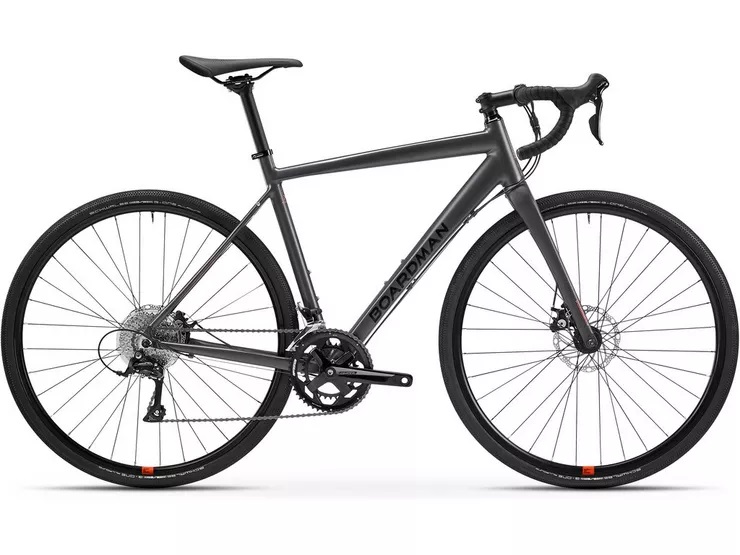
3. Boardman ADV 8.6
Specifications
Reasons to buy
Reasons to avoid
Boardman's entry-level gravel bike comes with Shimano Sora 2x9-speed shifting and Tektro mechanical disc brakes. This is a solid build for the money and the sub-1:1 gearing is ideal for off-road adventures.
Boardman fits good quality Schwalbe gravel tyres in 38mm width and both the tyres and the wheel rims are tubeless-ready to cut down on potential off-road puncture issues. There's a womens-specific version as well as the men's spec bike too, with Boardman's own finishing kit like bars and saddle polishing off a quality built for a reasonable price.
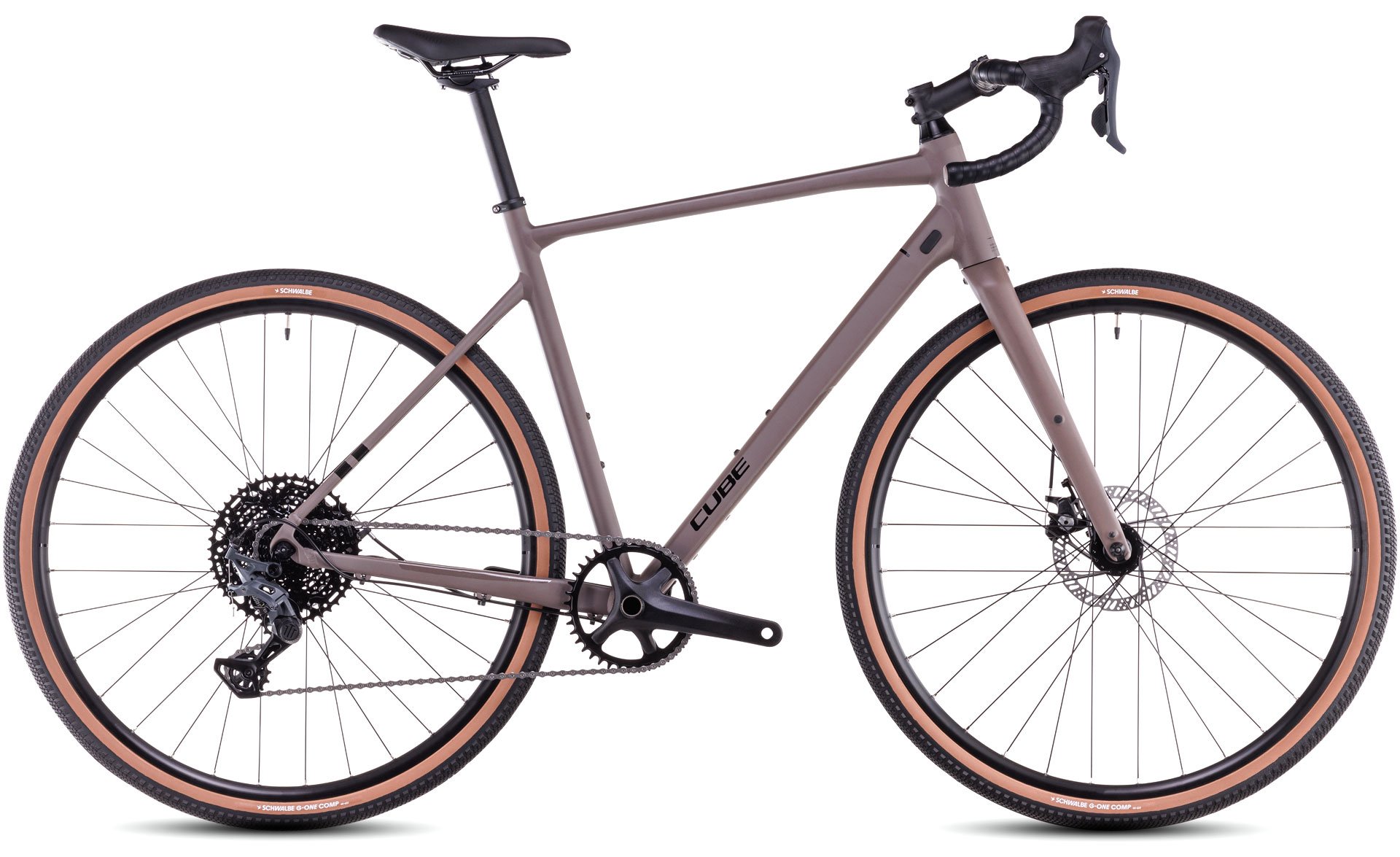
4. Cube Nuroad
Specifications
Reasons to buy
Reasons to avoid
The Cube Nuroad represents a solid gravel bike with a decent spec and a strong platform to upgrade from in the future.
Using a quality 6061 alloy frame and carbon fork, the Nuroad features a serviceable Microshift Sword gravel-specific 1x groupset with a clutched derailleur and a good spread of ratios over ten speeds. Cube also fits quality Schwalbe tyres and Tektro mechanical disc brakes.
You also get rack and fender mounts, so the Nuroad can be loaded up for adventures or for the commute.

5. VooDoo Nakisi
Specifications
Reasons to buy
Reasons to avoid
Halfords provides a decent spec for the outlay with its in-house VooDoo brand's Nisiki gravel bike. The frame comes with a full set of mounts, so you can add mudguards and/or a rear rack, adding versatility.
It's equipped with a subcompact chainset and 9-speed gearing which heads down below 1:1, which is nice to see at this price. The cable run is also fully within an outer housing, which should help keep shifting sharp. The mechanical disc brakes should provide decent stopping power as well. The wire bead tyres can't be set up for tubeless running though.
How to choose the best gravel bike under $1,000 in the US or £1,000 in the UK
What's the best frame material for a gravel bike?
The best gravel bikes under $1,000 / £1,000 will almost invariably include an aluminium (also known as alloy) frameset.
Aluminium bike frames are comparatively cheap to manufacture and will give you a reliable ride that should be comfortable. While most of the best gravel bikes are made of carbon, with a few made of titanium or steel, aluminium is a perfectly good material if you're looking for a budget gravel bike.
It's worth looking for a carbon fork rather than a metal one though, as it should help to take some of the surface buzz out of your ride. At this price, you're more likely to find an alloy fork though.
How many chainrings do I need?
Gravel bikes will come with either a 1x or 2x drivetrain - meaning one or two chainrings mounted to the chainset or crankset. While it would seem logical that 20 gears would be better than 10, this is not always the case. And a wider range may be achievable with less.
Borrowed from the mountain biking world originally, 1x drivetrains can hit the same, and sometimes a wider gear range than their 2x compatriots, and greatly simplify shifting because there is no front derailleur to faff with. There's also less for mud, twigs and other debris to get snarled up in, as well as a small weight saving.
The 1x specific rear derailleurs will usually have a clutch that aids chain retention to prevent it from bouncing over rough roads. This prevents the chain from slapping the frame or bouncing off the front chainring — these are also advantageous to 2x setups, but at this price point they're rare to see and also not a necessity.
A 1x specific rear derailleur will also be paired with a chainring that has alternating narrow and wide teeth that are profiled to grip the chain better when it's sitting on the chainring.
The downside to 1x drivetrains is there can be big jumps between gears, which is less of a problem with 2x. One isn’t necessarily better than the other, and what is right for you will depend on where and how you ride.
What's the difference between thru-axles and quick release wheels?
For nearly a century wheels were secured into bikes with a quick-release skewer. In combination with open dropouts, this system allowed for wheels to be changed on the fly without tools, and today the design is largely unchanged from the day it was invented.
First introduced on mountain bikes, thru-axles provide a stiffer and more secure dropout-to-wheel interface, ensuring the wheel is in the frame straight and removes the ‘have I done this up tight enough' uncertainty — it’s either screwed in all the way or it's not. All of this is key for running disc brakes, as too much flex in the wheel, or a wheel that is installed slightly off-centre, can cause the disc rotor to rub.
There was a lot of fluidity on standards and hub spacing when thru-axles first made the jump from mountain bikes, but the industry has settled on 12x100mm for the front and 12x142mm for the rear. They are a bit more expensive to manufacture than QR dropouts, and at the entry-level price point, we do still see some gravel bikes using quick-release.
What's the difference between 700c and 650b wheels?
Most drop bar bikes roll on 700c wheels, and so do most gravel bikes, but many of them are also compatible with smaller 27.5-inch wheels, commonly known in the gravel world as 650b.
With a smaller diameter rim, a 650b wheel allows you to fit wider, higher volume tyres (often measured in inches rather than mm) that see almost the same overall diameter as a 700c wheel.
These hoops allow you to tackle terrain that would put a skinnier 700c tyre out of its depth, without changing the handling characteristics of the bike. Because the tyres have so much more air volume, they are also considerably more comfortable.
That said, 700c setups are usually lighter and faster rolling and are better suited to smoother gravel rides, while 650b wheels are in their element on singletrack and bashing down rocky fire roads. Having the ability to slot in either size makes your bike that much more capable.
Do I need tubeless tyres?
Some of the bikes here are equipped with wheels and tyres described as "tubeless-ready". That means that they come fitted with inner tubes, but can be converted to run a tubeless setup.
For this, you'll need a set of tubeless valves, some tubeless sealant and often tubeless rim tape. Lots of wheels come with tubeless tape fitted and with inner tubes out of the box.
Tubeless can potentially save you from a lot of punctures and time lost fixing them when riding off-road, as the sealant will plug smaller holes in the tyres, often without you noticing.
It's a good idea to carry a spare tube and the materials to fix a puncture anyway though, just in case you ride over something that makes a hole that the sealant can't seal. Tubeless tyre plugs can also help to seal larger holes in tubeless tyres and you should carry some.
Whats the difference between mechanical and hydraulic disk brakes?
All modern gravel bikes will come equipped with disc brakes as they provide significantly better stopping power over rim brakes, especially in wet or muddy conditions. There are two different types, mechanical disk brakes use a cable while hydraulic uses fluids to apply the braking force. There is also a hybrid system which uses a cable to actuate a hydraulic calliper.
At the sub $1000/£1000 price point mechanical disc brakes are the most common as they are cheaper however some bikes do feature a TRP HY/RD hybrid disc. While mechanical brakes offer sufficient performance, a hydraulic or hybrid system will give considerably better braking performance.
How do I keep my new gravel bike safe and well-maintained?
Choosing your new gravel bike is only the beginning of your journey; next comes keeping it clean and running smoothly, not to mention preventing opportunists from making off with it.
Riding on gravel can get mucky, so it's important to at least keep the chain lubricated with the best bike chain lubes and consider giving it a deep clean every so often, following the advice we give in our guide to how to clean your bike.
Finally, keep your bike safe from theft by investing in the best bike lock, knowing how to lock a bike correctly, and comparing bicycle insurance to ensure you are covered by the best bike insurance policy for your needs.
We've got plenty of other tips around how to prevent bike theft as well if you want to look further into the subject.
The latest race content, interviews, features, reviews and expert buying guides, direct to your inbox!
Paul has been on two wheels since he was in his teens and he's spent much of the time since writing about bikes and the associated tech. He's a road cyclist at heart but his adventurous curiosity means Paul has been riding gravel since well before it was cool, adapting his cyclo-cross bike to ride all-day off-road epics and putting road kit to the ultimate test along the way. Paul has contributed to Cyclingnews' tech coverage for a few years, helping to maintain the freshness of our buying guides and deals content, as well as writing a number of our voucher code pages.
